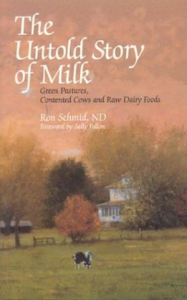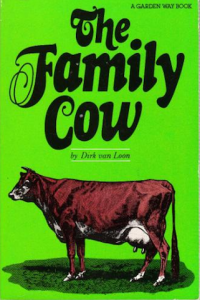Yesterday I visited the killing floor at Kam Lake View Meats. I had a very interesting experience and I am very grateful to Kam Lake View Meats and the local inspector for allowing it. I was there to harvest organs and glands from three heifers from Jocko Creek Ranch. I had ordered from Jocko Creek Ranch, one grassfed two year old heifer and two grassfed veal calves. For more information on why I like grassfed veal read Grassfed Veal. If you are looking for a full service butcher, here is their information:
Kam Lake View Meats Ltd.
Ron Keely
6453 Buckhorn Rd, Kamloops, BC, V1S 2A1
T: 250.828.1015
27 km
government inspected abbatoir, slaughtering, custom cutting, smoking, sausage making, good source for local meat, run The Cutting Block in Kamloops
That day, I learned many things on the killing floor. The hides, once a valuable byproduct, are now almost a waste product. The inspector said: “we are close to the day when the customer will have to pay extra to dispose of the hide.” The kill floor manager said: “when I started twenty years ago, the hides were worth $50.00 each. Now they get $5.00 a hide.”
It makes me think about my vegetarian days, when I did not want to wear leather because I thought it was environmentally unfriendly and cruel to animals. I thought we all should use cotton clothing. Of course, I did not think about all the water, energy, pesticides and herbicides used to produce industrial cotton. I do not think cotton clothing is environmentally friendly anymore. Now, I think about how long a piece of clothing made of leather or fur would last. I think about the skill of being able to tan that hide and make it into a piece of useful clothing, has almost been lost.
The internal organs and waste not harvested from animals includes the head, stomach, intestines, reproductive organs, tail end, hooves, and extra fat. Some can be used in raw pet foods but most has to be composted. There are parts of the intestine that are considered “toxic waste” and must be incinerated due to fears of Mad Cow Disease. The Weston A. Price Foundation has a number of essays on Mad Cow Disease by Mark Purdey called Part I, Part II, Part III, and Part IV.
These waste materials are shipped to Alberta because no one in the area wants to have a composting plant in their area. So, trucks full of animal waste moves up and down our roadways. The inspector shared some black humor regarding all the wishful thinking about “reducing our carbon footprint” while regulations require such inefficiencies. Again, the government always thinks big. Big composting plants cause big problems. Little composting plants cause little problems. But for the government it is hard to regulate small operations. For the small operations, government inspection and regulation is not cost effective.
Organs are normally harvested, though the interest in these foods have dwindled over the years. These foods are now commonly added to raw pet foods. This is ironic, because traditional people preferred the organ meats and fat over the muscle meat. During periods of good hunting, traditional people would eat organ meats and fat and would throw the muscle meat to the dogs. Traditional people would dry muscle meat as jerky and add fat to make pemmican. This was travel and starvation food. Read Guts and Grease for more information about traditional diets.
Kam Lake View Meats produces raw pet foods, so this would be a good local source if you need pet foods. Raw pet foods are called the Bone and Raw Food diet (BARF). In my opinion, raw food diets are far better for your dog or cat than dried or canned foods. Read Pottenger’s Cats by Francis Pottenger for more information about raw and cooked food feeding experiments. The Weston A. Price Foundation has an essay called Trends in Home Prepared Diets for Pets. There is a lot of controversy about raw food for your pet. Do your research and make your own informed decision.
We did not harvest the brain or pituitary glands. Kam Lake View Meats uses a 22 caliber rifle to kill the animal. This means the brain tissue is contaminated with lead and is unsafe to eat. In new slaughter houses they are required by law to use the humane hammer. The owner of Kam Lake View Meats has used this humane hammer and has renamed it the “inhumane hammer”. He has found the hammer causes more suffering for the animal but would allow the harvesting of the head meat, brains and brain organs.
The regular harvesting of glands has not been done for over eighty years. Before there was a pharmaceutic industry, people used glands to help heal endocrine problems. People with glands that were damaged by illness or injury might have to take glandulars for the rest of their lives or their condition would quickly deteriorate and they would die. For more information about glandulars read Royal Lee: Father of Natural Vitamins.
This is why I was on the killing floor. I wanted to harvest a number of glands from the three animals. With the help of these knowledgeable people, we located the thyroid, adrenals, ovaries, and pancreas. This wasn’t easy. Those pictures drawn by artists in textbooks does not do justice to the individuality found in all animals.
I brought home the following organs: heart, kidneys, and liver. I brought home the following glands: ovaries, thyroid, adrenals, and pancreas. When I got home, I cut up the glands into the smallest pieces I could. I cut up some of the heart and liver into small cubes. I then froze those glands and organs on a tray. After the pieces had frozen, I re-packed them into bags. I will leave the organs and glands for two weeks in the freezer to kill any parasites, before consuming raw. I will be able to eat the small pieces like a “frozen supplement pill”. The dose for organs is 1-2T a day or more. The dose for the glands is an issue. It will require some experimentation to get the dose right. I will be using Degeneration Regeneration by Melvin Page as a guide. I will contact Ron Schmid, who produces dried glandulars for human consumption. This will be a long term project for me. I will keep everyone posted about what happens and what I learn. If anyone knows about endocrine treatment with raw glands, please contact me.
Updated December 17, 2009: Here are two essays on adrenal function: What You Should Know About Your Glands and Further Experiments of Cortico-Adrenal Extract.


